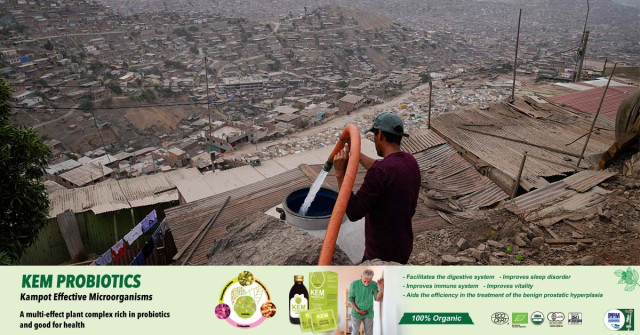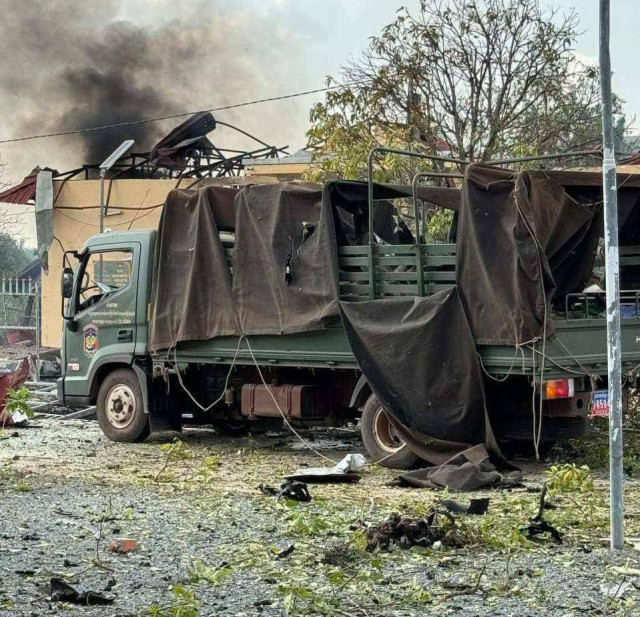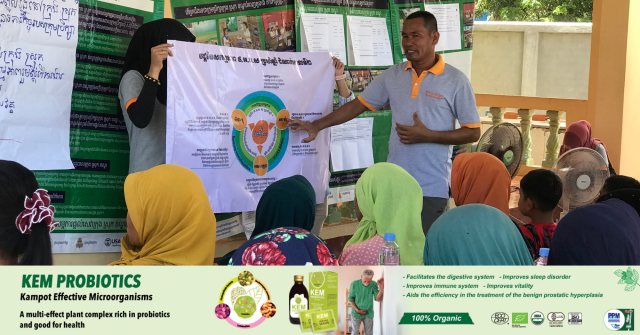Opinion: Unpacking Cambodia’s Commitment to Green Energy

- By Phon Dyna
- September 16, 2023 5:04 PM
Many developed and developing countries have been compelled to explore alternative energy sources, particularly environmentally friendly ones, due to the relentless increase of energy demand, rising price of fossil fuels and environmental challenges. As stated in Rectangular Strategy Phase IV, the Cambodian government prioritised encouraging and increasing investment in clean energy and renewable energy, especially solar, while reducing the production of energy from unclean sources to ensure long-term energy security.
However, the 2019 unprecedented drought, preventing hydropower dams from generating adequate electricity for increasing domestic demand, has prompted Cambodia to shift to fossil fuels. As a result, a 400MW heavy fuel power plant located in Kandal province was approved in 2019, followed by two fast-tracked 265MV and 700MW coal power plants in Oddar Meanchey and Koh Kong province, respectively. The shift triggered concerns from big brands—Puma, Nike, H&M and Adidas—since that contradicts their environmental commitments and will undermine Cambodia's economic attractiveness in the future.
Nonetheless, Cambodia’s shift to fossil fuel could be seen as just a stopgap to diversify while strengthening the domestic generation capacity, which is heavily dependent on dams and has put it in a precarious and vulnerable position. Cambodia's commitment towards green energy remains firm. Cambodia, in 2021, stressed that it plans on turning to renewable energy and other environment-friendly sources and ceasing to develop new coal power plants besides the approved ones since 2019. Moreover, the Power Development Plan (PDP) 2022-2040 pointed out that from 2026, US$ 6.55 of US$ 9.089 billion will be allocated to the expansion of the generation sources, including the planned hydro dams (non-mainstream of Mekong River), solar PV plants, Battery Energy Storage System (BESS), biomass, and natural gas. To exemplify the commitment further, the Cambodian government recently adopted a new national development blueprint called the Pentagonal Strategy, emphasising the promotion of the utilisation of renewable energy to the utmost extent.
China's pledge and Cambodia's goals parallel?
In September 2021, President Xi Jinping, at the United Nations General Assembly, highlighted the necessity of accelerating the transition to a green and low-carbon economy and achieving green recovery and development. Xi pledged to hit the carbon peak by 2030 and achieve carbon neutrality by 2060, adding that China will support developing countries to develop green and low-carbon energy and not build a new coal-fired power plant abroad. While levelling up the bilateral relations to Diamond Hexagon, President Xi, in February 2023, stressed that China and Cambodia need to ensure green development and promised that China will support the green energy transition in Cambodia by increasing its investment in hydropower and photovoltaic power generation. These present a promising sign for Cambodia's green transition efforts since China is the top investor, particularly in the energy sector, in Cambodia so far. Plus, at present, only China, Japan and South Korea, as Ambassador Cheunboran Chanborey lately maintained, are the only partners having capital and resources to invest as much as US$ 1 billion to US $2 billion in projects in Cambodia.
Cambodia's renewable energy potential
In the case of Cambodia, the alternative sources of clean energy are abundant yet underutilised. According to the 2003 report of the Cambodia National Mekong Committee (CNMC), the hydropower potential in Cambodia is reportedly to be around 10,000 MW while the Mekong River mainstream accounts for 50 percent of the hydropower resources, its tributaries account for 40 percent, and southwestern coastal highland shares 10 percent. Only about 10 percent of hydropower potential has been harnessed until now. Taking note of the recent decision of a 10-year halt prohibiting new dams on the Mekong River, it is worth mentioning that Cambodia has not ruled out the construction of hydropower dams in Mekong's tributaries and southwestern coastal regions, accounting for another 50 percent of the total, which can be exploited. Let us cite the most recent example. Financed by a South Korean-owned company, the 80 MW Stung Pursat I hydropower dam is situated on a tributary in Pursat province and is scheduled to be operational by 2026. Optimistically, the hydropower potential remains a crucial and tremendous energy resource that could be tapped anytime.
According to the data from the Electricity Authority of Cambodia (AEC), solar represented around 6.67 percent of Cambodia's energy mix in 2022, while the country's total solar installed capacity in 2021 was 356.80 MW and jumped to 436.80 MW in 2022. Despite its weather-dependent but free and abundant characteristics, solar power has high potential in Cambodia, estimated at 44 GW. Cambodia has a very sound record of sunlight irradiation with a daily average of 5 kWh/m2, peaking as high as 5.6 kWh/m2. This favourable geographical advantage stands out even compared to the pioneering solar nations, for instance, Germany, China and Thailand, with records of sunlight irradiation of 3 kWh/m2, 4.2 kWh/m2, and 4.9 kWh/m2, respectively. These showcase Cambodia as a promising place for solar development. If it manages to scale up the domestic solar power generation as planned, that effort would be a significant step toward a lower-carbon transition.
Compared with other countries in the Greater Mekong Subregion (GMS), Cambodia's wind resource is relatively small but viable enough for investment. The high wind speed was found in some Cambodia locations from September to February. Those ideal locations are situated in the eastern region and southwest coastal provinces—Sihanoukville, Kep, Kampot and Koh Kong—with an annual average wind speed of 5 m/s. A study pointed out that Kampot has relatively high wind potential and can generate up to 55 GWh annually with an estimated installed capacity of 28.8 MW of wind turbines. According to the work conducted by Intelligent Energy Systems (IES), Cambodia's wind energy potential is up to 16 GW. Two companies have expressed their interest in the wind potential in Cambodia. The French-owned Blue Circle attempted to invest in an 80 MW wind power project in Kampot province. Another is a Chinese company, Xinglan Maritime Energy Co Ltd (XME), 2021, which is working on its feasibility study of a US$200 million wind farm with a capacity of 100 MW located in Mondulkiri province.
Despite the temporary shift to coal due in 2019, Cambodia’s commitment towards renewable energy remains staunch. Cambodia's energy development plan corresponds with China's promise cogently; therefore, Cambodia should seize this excellent chance to expand and transform its power infrastructure towards a reliable and cleaner grid. If it receives sufficient attention and investment, the amalgamation of these abundant renewable energy sources—hydro, solar and wind—is adequate to meet the future energy demand. For China, the top Cambodian energy investor, Cambodia's green transition could be an excellent example of showcasing China's global commitment towards green development.
Dyna Phon graduates with a Master of Science in Development Studies from Lund University, Sweden. He is also an IISPP alumnus.















